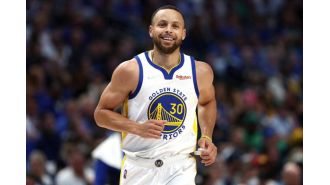More On Seed Rounds
There was a good discussion in the comment threads to yesterday’s post. This comment from Rick made me think a follow-up post would be helpful.
Seed, Later Stage, etc. all mean different things to different people. That’s where the confusion comes from.
I wrote a post explaining how we think about seed last June. Here’s the important part from that:
The first step you need to climb is building a product, getting it into the market, and finding product market fit. I think that’s what seed financing should be used for.
The second step you need to climb is to hire a small team that can help you operate and grow the business you have now birthed by virtue of finding product market fit. That is what Series A money is for.
The third step you need to climb is to scale that team and ramp revenues and take the market. That is what Series B money is for.
The fourth step you need to climb is to get to profitability so that your cash flow after all expenses can sustain and grow the business. That is what Series C is for.
The fifth step is generating liquidity for you, your team, and your investors. That is what the IPO or the Secondary is for.
At USV, we like to invest in a company once they have launched a product and we think that they have either found product market fit or they are well on their way. If you think about the “five steps” that leads us most often to invest in the Series A stage.
But occasionally one or two people, working nights or weekends, or working in an accelerator, or working for themselves and bootstrapping, are able to get a product into the market, get adoption, and get to or close to product market fit. They don’t need $3mm or $5mm, they need $500k to $1.5mm to finish off the search for product market fit, allow them to work full time on their project, and hire a few people to help them improve the product. That is the kind of seeds we like to do at USV.
Here are some examples:
Delicious – Joshua Schachter had built Delicious working nights and weekends, launched it, got traction, and needed $1mm to leave his day job, start a company, hire some people, and scale the product.
Tumblr – David Karp and Marco Arment built Tumblr while doing consulting to others. Tumblr took off and they needed to stop doing consulting work so the two of them could focus 100% of their time on Tumblr. Spark and USV each invested $300k to help them do that.
Etsy – Rob, Haim, and Chris built Etsy themselves, launched it, and were scaling the business. They had raised a little money from two local entrepreneurs but they needed more to keep Etsy growing. We participated in a $600k seed round to help them do that.
MongoDB – Dwight, Eliot, and Kevin had invested their own money and time getting the 10gen “stack” into the market. They wanted a financial partner to help them continue to fund the effort to find product market fit. USV provided seed capital so they could do that. They ended up finding product market fit for the database, MongoDB, but not the rest of the 10gen stack and they refocused the business entirely on the database and then were able to demonstrate product market fit and get to a Series A.
Foursquare – Dennis and Naveen built the initial version of Foursquare themselves. They launched the product and started to get users who liked the product, including a bunch of folks at USV. We liked what they were up to and thought they were close to nailing product market fit. We led a seed round that allowed them to hire a bunch more engineers who essentially rebuilt the product so it could scale.
Kickstarter – Perry, Yancey, Charles, Luke and maybe a couple others got the initial Kickstarter service launched and struck a chord with it. They had raised some capital from friends who helped them get the product into the market. USV led a seed round so they could hire a team and scale into the market.
Amino – Ben and Yin built Amino, went through Techstars, got their iOS product into the market, and proved that there was a market for native mobile communities. We led a seed round to enable them to hire a few more people, get an android app into the market, and nail product market fit.
OneName – Ryan and Muneeb built and launched OneName while they were in Y Combinator. We saw what they were doing and liked it a lot. We led a seed round to enable them to flesh out the product and build out the initial use cases.
Those are not the only seed investments we’ve made at USV. We’ve made over twenty seed investments over the life of USV. But these are good examples and I think they do a good job of explaining what it is we like to fund at the seed stage at USV.






